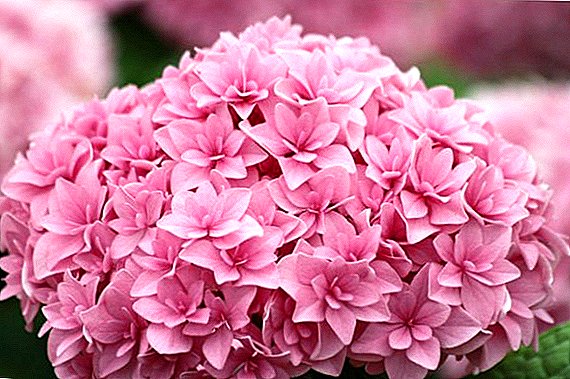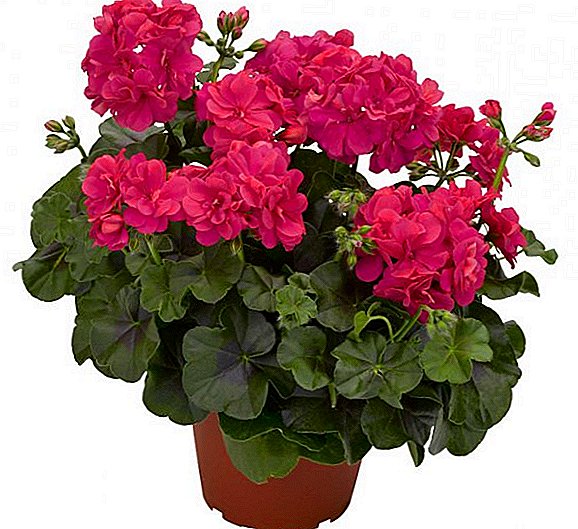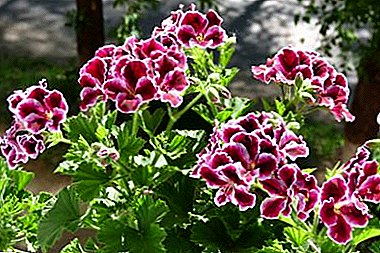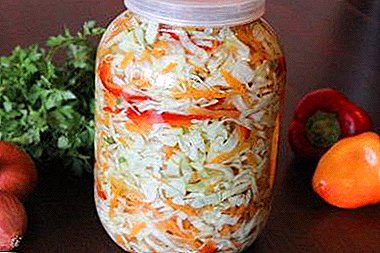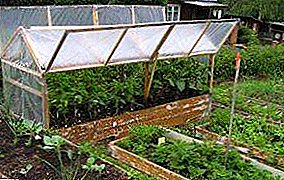
Eggplant grow well in open ground and in hotbeds. But the best yields will provide greenhouses, allowing you to shoot several harvests per year. Seedlings for greenhouses can grow independently.
Some gardeners prefer to buy it finished, which significantly speeds up the process growing, but increases the cost of vegetables.
To make a good harvest it is important to choose the right grade, monitor watering and temperature in the greenhouse and fertilize the soil in a timely manner.
The main advantages of the greenhouse
Growing eggplants in the greenhouse has a lot of advantages over the soil:
- weather independence;
- the ability to grow any, even very capricious varieties;
- in the heated greenhouse can be removed several harvests per year;
- high humidity, guaranteeing excellent taste of the fruit.
Greenhouse varieties
What varieties of eggplants are better to plant in the greenhouse? For growing in greenhouses suitable early-maturing varieties that do not require pollination. It is best to plant hybridsspecially designed for closed ground. When choosing varieties of eggplants for a polycarbonate greenhouse, it is important to take into account many factors: the color and taste of fruits, yield, the ability to store the harvest.
Every gardener has his own the best varieties of eggplant for greenhousesamong which the following are often noted:
- Purple miracle. Variety resistant to diseases and pests. The bush is compact, suitable even for low greenhouses. Early ripe grade of average productivity, fruits are dark-violet, cylindrical. Pulp is dense, greenish-white, very pleasant to the taste, without bitterness. Ripened eggplants are very convenient to collect, they are almost devoid of thorns in the stalk.
- Nutcracker. Very productive variety. Bushes grow quite tall. Tall varieties of eggplants require garters. The fruits are very large, bright purple, with dense white flesh without bitterness. Harvested eggplants are perfectly stored.
- Black handsome. In regions with a warm climate is grown in the soil, but in the middle lane it is better to put it in the greenhouse. The variety is fruitful, early maturing. Fruits are brown-purple, large, the flesh is tender and not bitter. Resistant to disease, fruits are well kept.
- Bibo. Resistant to pests grade, characterized by high yield. The fruits are white, round, very tender and pleasant to taste. The flesh is absolutely devoid of bitterness. Harvested eggplant well stored.
- Marzipan. Early grade eggplant for greenhouses. Very fruitful. Bushes are compact, fruits are round, bright purple. The flesh is very delicate, with a pleasant sweetish-fresh taste, without the slightest sign of bitterness. Eggplant is great for canning.
- Moneymaker. High-yielding variety. The fruits are elongated, rounded, dark purple. Small elegant eggplants are perfectly stored, they are very good for canning.






Which greenhouse to choose?
Eggplant Can grow in a greenhouse with or without heating. The second option is suitable for summer time, the greenhouse helps to maintain a stable microclimate, protects plants from wind gusts, night temperatures, hail and other weather vagaries. In such a shelter seedlings are planted in late spring.
Most available option - greenhouse covered with film. It keeps warmth well, lets in sunlight. However, the fragile film is quickly torn and deformed, such a coating will have to be changed every year. The glass is more durable, but can crack under the weight of snow.
The best option cover for greenhouses - polycarbonate. It is expensive, but without any problems serves several seasons. Having invested in such a structure, you can take good yields and not worry about the annual restoration of the greenhouse. Polycarbonate is better mounted on a metal frame with a special treatment that protects the structure from corrosion.
 Greenhouse for growing eggplant may be arched or pitched. There are also wall structures adjacent to the house, utility room and other structures. The height and size of the greenhouse depends on the capabilities of its owner.
Greenhouse for growing eggplant may be arched or pitched. There are also wall structures adjacent to the house, utility room and other structures. The height and size of the greenhouse depends on the capabilities of its owner.
Vegetables are best grown in the ground, but some gardeners prefer shelving, increasing the useful area of greenhouses.
In order for plants to develop well, greenhouses can be equipped with lighting. If the greenhouse is very large is recommended equip it with a system drip irrigation. Eggplant - moisture-loving culture, this watering will help maintain the desired degree of soil moisture. Good ventilation is required.
Heating the greenhouse is better in a combined way. Maintain the required temperature biofuel will help (a mixture of manure and straw, rotted and placed under the top layer of soil). You can warm the greenhouse using solar panels, electric boiler or fire, driving warm air through the pipes. For express heating useful heaters or stoves, stoves.
Growing secrets
How to grow eggplants in a polycarbonate greenhouse? Eggplants are not considered too whimsical culture. They are resistant to pests, distinguished by rapid growth, respond well to fertilizing. Success can even beginner grower. The process begins with the cultivation of seedlings. It can be bought ready-made, but it has many advantages for those sowed personally:
- profitability;
- sprouts get stronger and viable;
- the process of transplanting and survival is facilitated.
Purchased soil for seedlings is not suitable. They have a too large percentage of peat, which does not give the seed strength for full development. It is better to make a mixture for planting yourself using one of the following recipes:
- a mixture of humus, garden soil and river sand (2x2x1);
- peat, garden soil, sawdust (2x1x3);
- compost, peat, garden soil, river sand (1x1x2x1).
 The mixture must be ignited for the destruction of insect larvae and pathogens. After that, the prepared soil is spilled with a bio-type “Baikal” solution to restore beneficial microflora.
The mixture must be ignited for the destruction of insect larvae and pathogens. After that, the prepared soil is spilled with a bio-type “Baikal” solution to restore beneficial microflora.
Superphosphate or other mineral fertilizers in the proportion of 20 g per 10 liters of soil must be made to the soil mixture. Instead of ready-made complexes can use wood ash. During the period of growth, seedlings are watered several times with a solution of nitrogen fertilizers, which allow the formation of a bush with a green mass.
Seedlings most conveniently planted in plastic containers with cassettes. They retain moisture well and facilitate the process of transplanting grown plants. Peat pots undesirable.
The weak roots of young eggplants cannot grow through the walls, as a result of which the plants develop poorly. When to plant eggplants for greenhouses? Sowing is carried out at the end of January or in February. For heated greenhouses, seedlings can be prepared earlier, plants for ordinary greenhouses are planted in late February.
To improve germination seeds can be soaked for 10-12 hours in a growth stimulator, and then wrap in a damp cloth and leave for peck.
Prepared seeds are sown in a well-moistened soil. Seeds are not buried, they should be dusted with a thin layer of soil mixture on top. Capacity with seeds covered with glass. Seedlings should be regularly sprayed with soft water at room temperature, moistening not only the ground, but also the air around it.
For germination seeds need a stable temperature (20-22ºC), high humidity and bright light. It is recommended to organize the illumination for 3-4 hours daily.
When the seeds germinate, they begin to harden, removing the film for a few minutes first, and then increasing the hardening time to an hour or more. It is advisable to move the plants to sunlight and closely monitor the soil moisture. Weak sprouts better to remove, it will give the opportunity to grow only strong and viable plants.
Planting and care
The technology of growing eggplants in the greenhouse.
How to grow eggplants in the greenhouse? In the heated greenhouse sprouted seedlings can be planted in early spring. The seedlings prepared for movement should have the following parameters:
- about 75 days old;
- developed root system;
- the presence of 8-9 leaves;
- stem height up to 20 cm.
 A clear signal to urgent transplant will be the appearance of buds on young plants. Growing and caring for eggplants in the greenhouse, the process is painstaking.
A clear signal to urgent transplant will be the appearance of buds on young plants. Growing and caring for eggplants in the greenhouse, the process is painstaking.
The soil in the greenhouse loosens, moistened, mixed with manure or compost. To reduce the acidity in the soil can be made dolomite flour. Ash and potassium sulfate will help improve nutrition. If the soil is too dense, it is worth adding sawdust.
The scheme of planting eggplant in the greenhouse: young plants are planted at a distance of 45 cm, distance between rows - 60 cm. Carefully move the seedlings to a new place of residence, the root system of eggplants is very fragile.
How to care for eggplants in the greenhouse? After transplanting requires moderate watering with warm water, it is preferable to do it in the early morning. Airing is recommended after watering. It is important to ensure that young air does not get cold air.
For good growth eggplants need fertilizer. Fertilizing is carried out three times per season, after the start of fruiting, nitrogen-phosphorus complexes are recommended. Organic fertilizers after planting in the ground are not used, they contribute to the large development of green mass to the detriment of the fruit.
Find out on our website which garden crops are compatible with eggplant when planted in one greenhouse, as well as what else can be grown in a greenhouse.
Plants in the greenhouse must be protected from pests. Most often, eggplants are affected by the whitefly aphids, fruit mites. Help protect them air moistening and periodic spraying plants. Use clean water and weak insecticide solutions.
When the stems stretch to 30 cm, they need to be tied to supports. With the beginning of flowering it is necessary to increase watering and start weekly feeding complex fertilizers for tomatoes. Harvesting is recommended when the length of the fruit reaches 8 cm. Ripe eggplants have a shiny skin. Don't wait too long overripe fruits can taste bitterbesides, they produce a large number of hard seeds.
Growing eggplants in a greenhouse can not only provide the family with delicious early vegetables, but also to be the start of your own business. Having built a spacious greenhouse up to 100 square meters. m, you provide yourself with a stable income, and eggplant yields will grow several times.
About growing eggplants in the greenhouse in the video:





